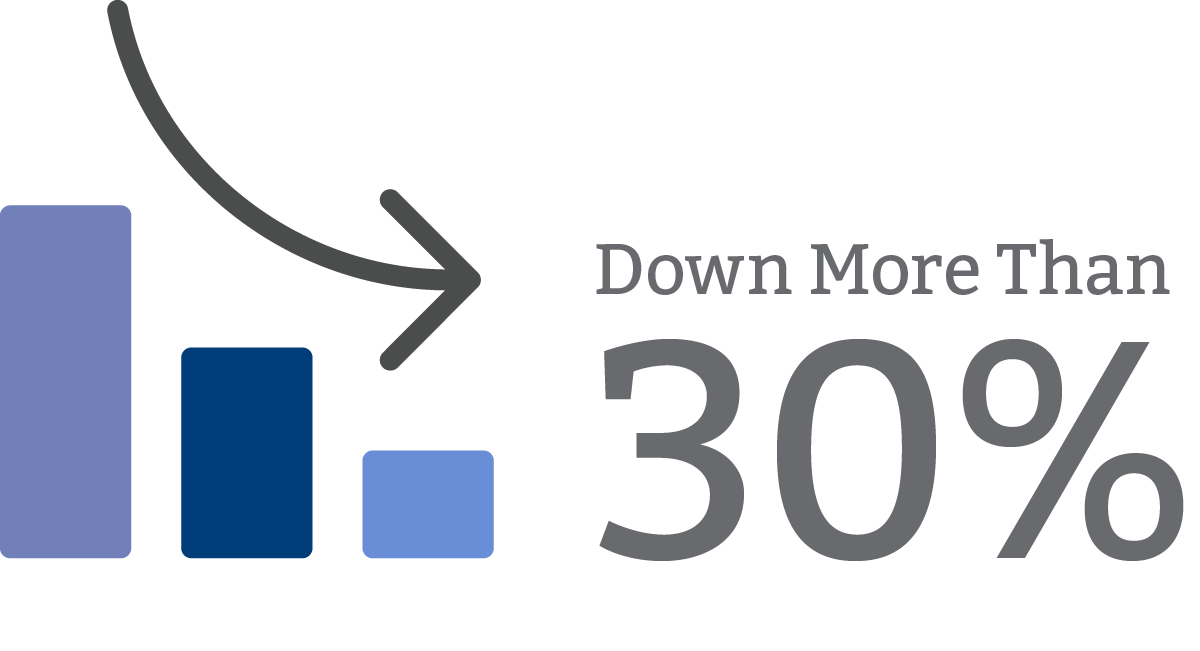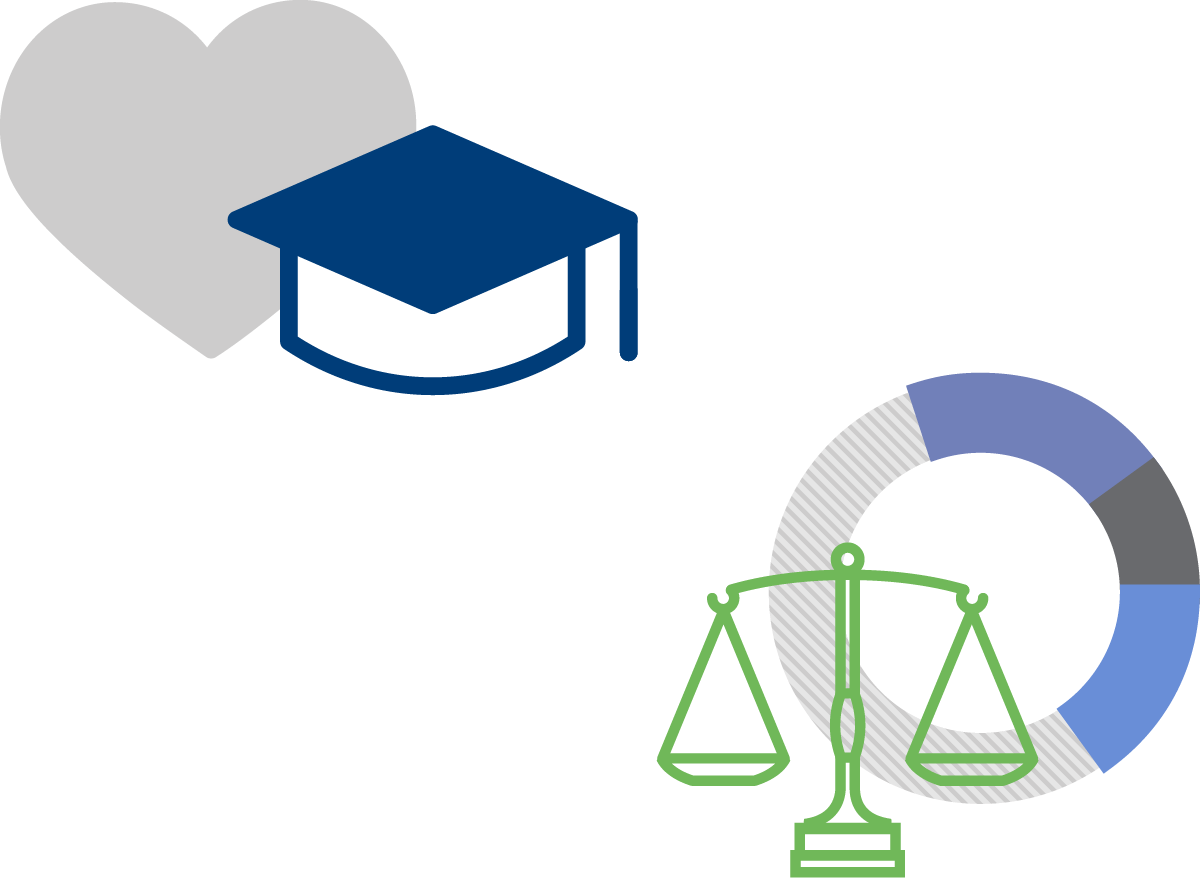The Canary in the Classroom
Early Warnings and What Smaller Schools Can Do Before It’s Too Late
Many liberal arts colleges are facing disproportionate financial challenges.
With a surplus of job openings and unemployment numbers at historic lows, it is easier for high school graduates to enter the workforce without a college degree. Coupled with continually rising costs, it’s no wonder Generation Z students are seriously considering if the debt is worth a college degree.
This particularly impacts small post-secondary schools, which suffer more from enrollment slippage than their land grant and large state school counterparts.

While there is no single threshold of decline, it’s safe to say that if enrollment is down more than 30 percent, your school is in the rough water and leadership must make tough decisions to maintain fiscal control.
A school’s reaction to declining enrollments can have a compounding impact. A college suffering a deep decline in enrollment typically feels the need to increase scholarships to attract more students, but this results in lower net revenue. Recognizing discounts aren’t enough is a key first step. But recognition must be quickly followed by decisive action.
Bring Fresh Interest
When you’ve recognized the problem, a rigorous self-assessment is mandatory.
![]() Schools should prepare a SWOT analysis (strengths, weaknesses, opportunities and threats) to identify the core value proposition and competitive differentiators of the institution. Use an inclusive process with faculty and staff to get total buy-in and define core and non-core programs, assets and resources.
Schools should prepare a SWOT analysis (strengths, weaknesses, opportunities and threats) to identify the core value proposition and competitive differentiators of the institution. Use an inclusive process with faculty and staff to get total buy-in and define core and non-core programs, assets and resources.
![]() Use the data to measure a programs contribution and make the tough decisions when the criteria are not met. If a class doesn’t attract a minimum of eight students, it won’t be a great experience for the students, and it will also be a resource drain for the college. Cull these programs in order to prioritize areas that attract enrollment and produce positive student outcomes.
Use the data to measure a programs contribution and make the tough decisions when the criteria are not met. If a class doesn’t attract a minimum of eight students, it won’t be a great experience for the students, and it will also be a resource drain for the college. Cull these programs in order to prioritize areas that attract enrollment and produce positive student outcomes.
The next step is reaching out to prospective students about these core offerings where they live—and today’s students live online. Large state schools can still benefit from word of mouth, televised sports, and reputation to do their marketing to a nationwide audience, small schools often rely on billboards and print advertisements targeted in a smaller geographic radius. It is critical that schools leverage digital marketing and online processes to attract and retain more students. In the current market, progressive schools place ads on streaming video and audio, implement search engine optimization, purchase keywords and experiment with pay-per-lead sources, and continually re-allocate their spend to achieve the lowest cost-per-start.
Because these touchpoints are digital, you can track where prospective students drop off. Analyze your admissions process for drop-off points and then test ways to increase yield and total enrollments.

Create Liquidity
In tandem with attracting new students to increase revenue, struggling schools should review the endowment for the potential to increase donations and/or remove restrictions.
Among small colleges, endowments are typically restricted, meaning only the income portion can be used to fund operating deficits. If you have restricted funds, appeal to benefactors to remove restrictions on donations to create liquidity. The unrestricted portion of donations can fund operational shortfalls or scholarships to increase enrollment.

Some schools have been able to excite significant benefactor alumni, fostering anchor donations and a matching challenge for alumni to participate.
There is also the option to evaluate hard assets, especially real estate. Schools sometimes have unused land that could be sold or monetized to improve financial stability and fund a turnaround plan. Schools that have already borrowed against campus real estate may look to residential properties or art collections to find unencumbered assets as additional collateral or to monetize to create liquidity.
Look at Expenditures
As you look to bring more money in the door, it’s also important to look for strategic opportunities to reduce costs.
Outsourcing non-core functions such as housing, dining and IT to third party providers can go a long way in controlling costs. There is growing investor interest in funding companies that provide these “shared services” on college campuses, and oftentimes quality can be enhanced while costs are reduced and made more variable.

Consider Partnerships
Difficult circumstances necessitate difficult conversations and decisions that a school’s administration, trustees, regents and faculty may need to face.
For some, especially those who have waited a bit too long, it may be necessary to consider shared program arrangements with a nearby school or schools. In order to rationalize existing course offerings while expanding course offerings in other areas, agreements could take the form of sharing credits, cross-promotion of programs to avoid costly curriculum duplication, or marketing and branding agreements that can help broaden a school’s visibility and reputation.
There are many options a smaller college needs to consider when facing significant financial headwinds. Trustees need to confront hard truths about projected enrollment outlooks, and must make necessary cuts or alter future plans to create financial stability. All options should be on the table at the outset, and contingency plans for adverse events put in place.
The Carl Marks Advisors team is well-equipped to guide key decision makers through their options and help execute a financial strategy that’s based on a solid understanding of budget preparation, cash flow needs, and marketing requirements for institutions of higher learning.
We understand the complex challenges that lenders, investors, administrators and trustees are currently facing. Our professionals work closely with the administration and trustees to address strategic positioning, pursue merger or acquisition opportunities, improve revenues and enrollment, implement programmatic changes, and resolve regulatory and accreditation issues.
